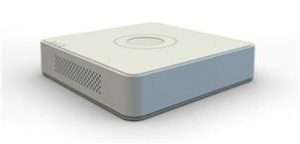What are the essential features of CCTV DVR?
DVRs vary in their specification as well as price. The higher the specification you choose, more is the price. The specifications that determine the quality of a DVR are as follows.

1. Number of channels:
DVRs come in various amount of channels that are supported. A channel is a port to which a camera is connected. So the more the number of channels more is the number of cameras that can be connected to the DVR. DVRs come in 4, 8, 16 and 32 channels in general but some high-end DVRs may support up to 64 channels.
2. Resolution:
The resolution is the maximum clarity of the images that can be captured by the DVR. Some DVRs are 1080p while some are 720p. But you must remember that the actual resolution of the images captured depends on the specifications of the cameras.
3. Memory:
It is the total space in GB or TB that is available for recording the videos before new video captured is written over the existing files. Each DVR has its maximum storage capabilities listed along with the number of SATA drives supported. For example some DVRs that are available with Velacctv support 2 SATA drives with up to 6 TB storage. The actual memory usage depends on many factors like the frames per second, compression technology and resolution.
4. Frames per second:
The frames per second indicate the number of images recorded in a second. So a camera with 30 fps which is the real-time recording captures 30 images in a second. The fps of a DVR is calculated by dividing the total fps with the number of channels.
5. Network capabilities:
Some DVRs have the capabilities to connect to a router directly and are called NVR or Network Video Recorders. IP cameras must be connected to NVRs.
How does a DVR work?
The working of a DVR is quite simple. They are essentially computers that capture, compress and store video from CCTV cameras. Most DVRs are Linux based systems containing a box with a motherboard, hard drive and chip with the essential softwares burnt into the chip. The video is also sent from the DVR to the monitor. The DVR has all the necessary ports to connect the cameras and the monitor.
Can I install the DVR myself?
Yes, you can. DVRs are very easy to install. You just have to connect the cameras, monitor and mouse and then configure the settings on the monitor using the mouse or DVR remote.
How do I view the camera outputs remotely?
You can view the CCTV output remotely by connecting the DVR to a modem or router. DVRs with RJ45 socket can be connected to a modem or router. The refresh rate decides the frames per second that you can view. Refresh rate depends upon the internet connection speed when you are viewing the video remotely. For local viewing, the refresh rate is the same as the fps supported by the DVR.
